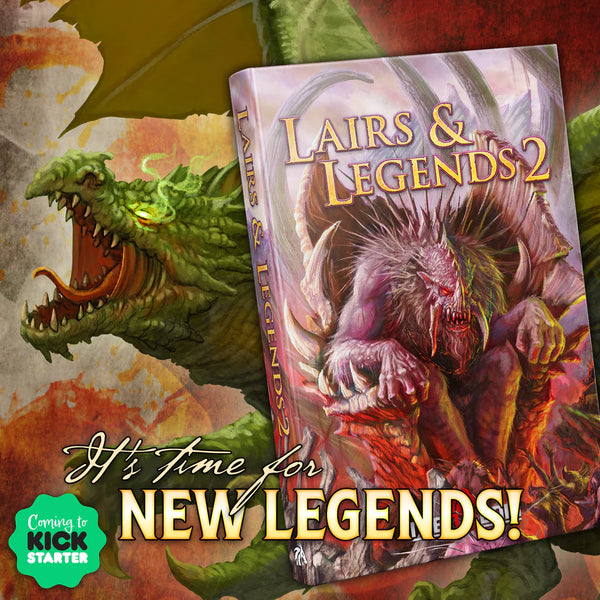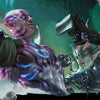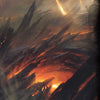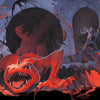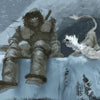Why Monsters Should Never Attack First in D&D
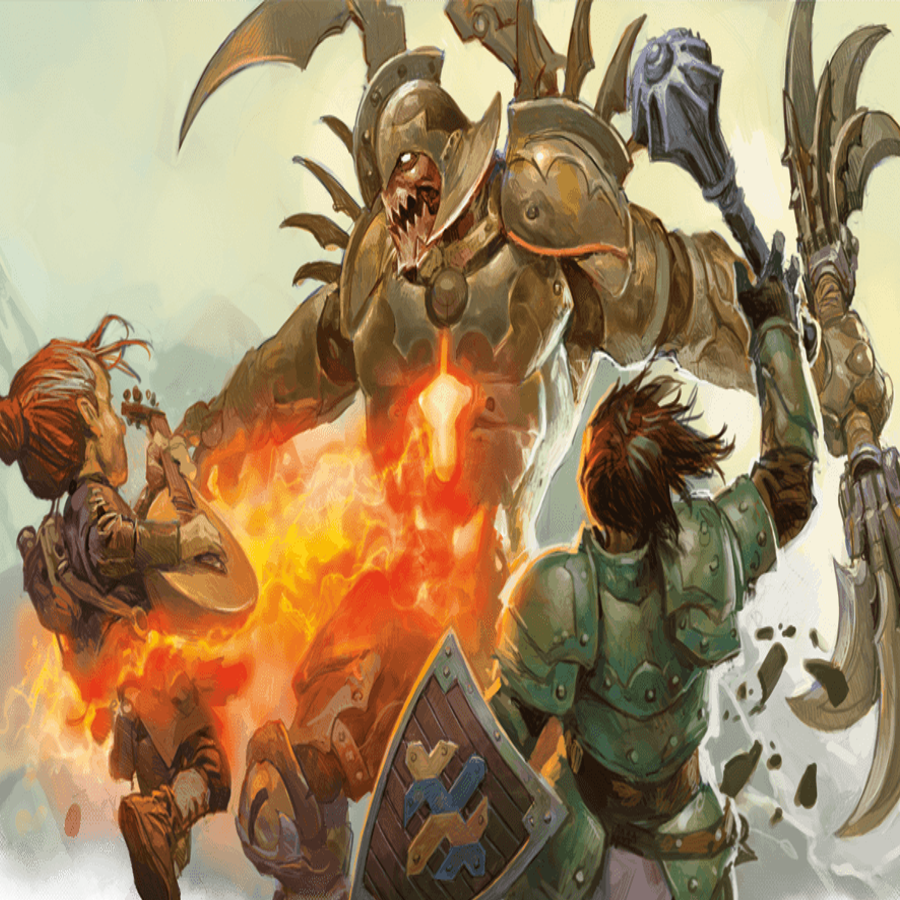
By Luke Hart
I’ve been in many games where every time we encounter an enemy—any enemy—it simply attacks. Crap, I’ve been in a game where before we even knew there were enemies, the dungeon master was asking us to roll initiative. And let me tell you, one-dimensional games like those get really old fast. Thus, I submit to you that there is a BETTER way to run encounters.
By the way, running awesome games with in-depth lore, deadly traps, and terrifying monsters doesn’t have to take hours of prep! Lairs & Legends 2 and Loot & Lore 2 have everything you need! Hand-crafted by a team of professional game masters to make it as easy to use as possible, they are an anthology of game master resources to fuel you for years to come.
Watch or listen to this article by clicking the video below.
Now, to illustrate my point, I will give you two versions of an encounter—the same monsters and the same players, but two different ways it could be run at the game table.
In the first encounter, the monsters don’t attack first; there is a dialogue, players get to interact with them, and they get to use their special voices and roleplay their characters’ motivations. They get to try to use diplomacy. They might have a clever idea for tricking the monsters—maybe even convince them to work on their side. Maybe that works, but maybe not. Let’s say the GM decides it doesn’t, and the monsters attack.
All the players got to engage with that encounter in various ways. Some used diplomacy, others trickery—the group got to experience social interaction even though, in the end, combat broke out anyway.
This way, the encounter appealed to a variety of player types and play styles. Everyone got to engage with that encounter in their own way.
In the second encounter, as soon as the monsters see the characters, they attack. That’s it. Combat breaks out. The players did NOT get to engage with that encounter in any other way than simply fighting the monsters. It did NOT appeal to a variety of play styles, only to the players who like combat.
Furthermore, the DM took the choice out of the players’ hands. He didn’t let them choose how to approach that encounter; he forced combat on them. This, in a way, takes agency away from players and forces them to play the game the way the GM wants them to play.
Now, I want to be clear here—there is nothing wrong with monsters that simply attack. Sometimes, that is the only logical way to roleplay them. However, if the entire game is only full of enemies that always just attack, it makes it far less enjoyable for many players.
You want to build your adventures and games with elements that appeal to a variety of player types by including classic elements like exploration, social interactions, and combat.
The same is true for encounters. When you build encounters, you want to do the same thing. Strive to make encounters that can satisfy both social interaction and combat (if it comes to that).
How can you do this? Think about enemy motives! Why are the bugbears there? Do they really want to risk their necks? Or would they be OK with scaring the PCs off or intimidating them? Or maybe the bugbears think they can get points with the boss if they convince the characters to join their pirate association.
Create your bad guys with more depth than just stat blocks that attack. That’s unimaginative, gives no depth to the gameplay, and can ultimately just turn into a hack-and-slash game where the players just murderize everything in their path. Such a game might appeal to some groups of players, but most are looking for something more meaningful in the game than that.
When I commission writers to create adventures for Lair Magazine, this sort of depth to enemies and opportunities for social interactions instead of just killing everything is exactly what I’m looking for.
For example, The Temple of Two Dragons, written by Zac Chaney, came out in the Fire & Feast, the July 2021 issue of Lair Magazine. It features enemies who are typically just bad guys who attack—namely chromatic dragons—which are far cooler and expressly lead to a more enjoyable game experience because they DO NOT just attack.
Here’s the thing: We know many encounters will devolve into combat eventually, but at least give your players the opportunity to resolve the encounter another way; let them make that choice. Try to force combat on them as seldom as possible and only when there is no other logical choice for roleplaying the monsters.
Many of the best encounters in my games have happened when the monsters did NOT attack first, but instead, I allowed the players to talk with them.
For instance, one group of players convinced an ogre that the hobgoblins were not giving him enough food and they were holding out on him. He ultimately fought at their side before plummeting to his death with an illusionary flank of goat.
Another time, a Youngling group in the dungeon of the mad mage encountered the “vampires” acting troupe. Instead of fighting, they talked their way past and proceeded through the dungeon—then they came back and killed them anyway. They were young players; they liked killing stuff. I don’t know.
During one encounter, something crazy happened. I was just about to have the monsters attack, but when I said to roll for initiative, one of my players asked, “Really? They just attack?” This prompted me to reconsider, and we ended up having a social interaction. One player decided to bribe those yugoloths with 20,000 gold pieces so that they would not have to fight them. He was off by himself, and the rest of the party could not participate in that negotiation. The creatures left them alone. When the players were all back together they discussed it and were kind of upset with the other player for giving away 20,000 gold pieces. That turned into a running joke for the rest of that gaming group, and we constantly remind that player about giving away 20,000 gold pieces.
None of these awesome encounters would have happened if I had just had the enemies attack first.
It’s Time for New Legends!
Lairs & Legends 2 and Loot & Lore 2 are the ultimate game master resource! These two massive books put an anthology of everything you need to run amazing games for YEARS at your fingertips.
- Over 30 Adventures
- 30 Stand-Alone Encounters
- More than 100 Monsters
- 6 New Rule Sets
- And much more!
These books are written to make running the game easy for new and veteran GMs. Each resource is built with intuitive formatting, clear wording, and evocative art. You’ll never again have to dig through dense paragraphs to find critical details you need during a live session.
These 5e resources are designed to scale to your needs; whether it’s a quick drag-and-drop trap to add some spice to your session or complete adventures that span levels 1 to 20. The sky’s the limit with what your games can become with Lairs & Legends 2 and Loot & Lore 2.
-
Posted in
Game Master How-To Articles

